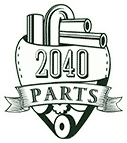New Rear Rotor Yamaha 350 Warrior 90 And Up on 2040-parts.com
Coopersburg, Pennsylvania, US
Transmissions & Chains for Sale
 Moose trx400ex 400ex honda polyurethane chain slider(US $44.99)
Moose trx400ex 400ex honda polyurethane chain slider(US $44.99) Yamaha swingarm sleeve seals end cap bearings kit yfz450 450 2004-2008(US $39.00)
Yamaha swingarm sleeve seals end cap bearings kit yfz450 450 2004-2008(US $39.00) New trx450r swingarm bolt swing nut 400ex 250r 450r(US $29.95)
New trx450r swingarm bolt swing nut 400ex 250r 450r(US $29.95) Moose kfx450 kfx 450 kawasaki polyurethane case saver(US $44.99)
Moose kfx450 kfx 450 kawasaki polyurethane case saver(US $44.99) Trx450r 2 sets front brake pads 450r 450(US $20.00)
Trx450r 2 sets front brake pads 450r 450(US $20.00) 2 sets front brake pads kfx 700 kfx700 700 650 kawasaki(US $20.99)
2 sets front brake pads kfx 700 kfx700 700 650 kawasaki(US $20.99)
Hyundai beefs up its WRC team
Wed, 10 Apr 2013Hyundai revealed last year that they’re preparing to take on the World Rally Championship (WRC) from 2014 when a rally car based on the i20 will take to the world rally stage to cast some sport fairy dust on Hyundai’s showroom cars. At that time we had little information about the team, but in January we learnt that Hyundai had appointed Michel Nandan to head up their WRC efforts, a good move as Nandon was the technical director for the Peugeot WRC team until 2005, so he knows his stuff. Now we learn that Hyundai is beefing up its WRC team as it prepares for a full season of WRC in 2014.
Mercedes E-class Estate (2010): first official photos
Wed, 05 Aug 2009By Alex Michaelides First Official Pictures 05 August 2009 00:01 Take a look at these first official pictures of the Mercedes Fascination concept’s more sober cousin, the Mercedes E-class estate. It’s the latest variation to join the burgeoning Mercedes E-class family, leaving only the convertible and – possibly – the Fascination-emulating sport wagon to come. At the front, you’d be hard-pushed to find a difference between the new E-class estate and the saloon.
Worth a read: Wired's 'Why Getting It Wrong Is the Future of Design'
Thu, 25 Sep 2014Wired has just published a series of short articles entitled 13 Lessons for Design's New Golden Age. While there are some interesting examples cited in the piece, the concluding article, ‘Why Getting It Wrong Is the Future of Design' by the former creative director of Wired magazine, Scott Dadich, feels like it has particular resonance for car design. Dadich's Wrong Theory uses disruptive examples from the world of art, plus his own experience of working at Wired, to explain how design goes through phases: establishing a direction, creating a set of rules that define that direction and finally someone who dares to break from that direction.

